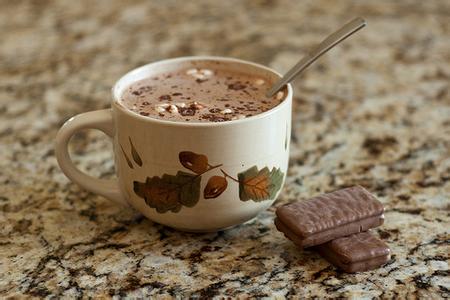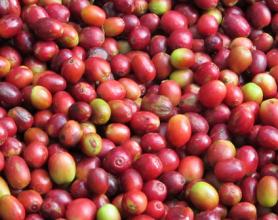Colombian coffee bean characteristic price brand flavor description taste treatment origin
Colombian coffee bean characteristic price brand flavor description taste treatment origin
Aroma: both dry and wet fragrance have obvious "maple sugar aroma", that is, the sweetness of pectin fructose from high-quality shallow baked beans, which is very different from that of caramel; hot aroma concentration is very high, similar to grapefruit, melon can be identified by a little colder or diluted.
The key to honey treatment lies in the amount of pulp retained. The more it is retained, the more obvious the characteristics of honey treatment will be. However, the risk of excessive fermentation will be higher, and the characteristics of each "Honey cofffee" will be different due to different conditions, such as the local climate (sunshine / rainfall probability / air humidity). Or it is the preference of the processor and has different processing characteristics of yellow honey: about 40% of the pectin is removed. The drying method needs the most direct heat absorption, receives the most light drying, and lasts for about 8 days to reach the stable value of water content.
Red honey: about 25% of the pectin is removed; it takes longer to dry than yellow honey, and reduces direct exposure to sunlight, even in shading sheds, lasting about 12 days.
Black honey: hardly remove pectin; dry for the longest time, lasting at least 2 weeks, with a cover to avoid too strong sunlight, prevent drying too fast, and make sugar conversion more fully.
Taste: the taste of imported melon is obvious, with a little nutty rhyme, the bitterness is very low, the acidity is general, the mellow thickness is general, and the cleanliness is good; after the cold, the sour taste is a little stronger, the latter part appears a little miscellaneous smell, similar to the fishy grass, and even a little rust. Sweetness is good.
Although Costa Rica has won the recognition of coffee gluttons through honey-treated coffee beans, it is also closely related to Costa Rica's superior geographical and climatic conditions, and the selection of Arabica varieties of coffee. Costa Rica's high-quality coffee beans are called "very hard beans" (SHB), and the quality of hard beans (HB) and slightly hard beans (SH) decline in turn, and this is also the way it is graded. Extremely hard beans grow at an altitude of more than 1500 meters, and altitude always represents the quality of coffee, and high altitude means better quality. In addition, due to the high altitude drop caused by sufficient rainfall, is very beneficial to the growth of coffee trees; and high altitude night temperature is low, resulting in slow growth of trees, so that coffee fruit better absorb more nutrients, coffee flavor is also richer.
Its three most famous producing areas are Tarasu, south of the Costa Rican capital SanJose, as well as the producing areas of the Central Valley and the western valley. There are many excellent independent estates, all of which are carefully cultivating more fine washed and honey-treated coffee beans. let's hope that Costa Rica will bring us more honey-treated coffee surprises.

Important Notice :
前街咖啡 FrontStreet Coffee has moved to new addredd:
FrontStreet Coffee Address: 315,Donghua East Road,GuangZhou
Tel:020 38364473
- Prev

Costa Rican Yellow Honey Coffee Flavor description, taste treatment, regional grinding scale
Costa Rican Yellow Honey Coffee Flavor description although the development of fine coffee started late, Costa Rican boutique coffee is developing rapidly, with its mild acidity, soft taste and sweet high-quality berry flavor. And the so-called honey treatment method means that the coffee beans are washed to remove the skin and flesh of the fruit.
- Next

The treatment of Panamanian Flower Butterfly Coffee Bean Grinding scale Variety producing area Manor
Panama covers an area of 75517 square kilometers, with a length of 772km and a width of between 60km and 177km. The coastline is 2988 kilometers long and the land boundary is 555 kilometers long. In terms of longitude and latitude, Panama is located between 7 and 10 north latitude and 77 to 83 west longitude. Panama is rich in mineral resources, but it is not exploited much, and the scale of the mine is relatively large.
Related
- Detailed explanation of Jadeite planting Land in Panamanian Jadeite Manor introduction to the grading system of Jadeite competitive bidding, Red bid, Green bid and Rose Summer
- Story of Coffee planting in Brenka region of Costa Rica Stonehenge Manor anaerobic heavy honey treatment of flavor mouth
- What's on the barrel of Blue Mountain Coffee beans?
- Can American coffee also pull flowers? How to use hot American style to pull out a good-looking pattern?
- Can you make a cold extract with coffee beans? What is the right proportion for cold-extracted coffee formula?
- Indonesian PWN Gold Mandrine Coffee Origin Features Flavor How to Chong? Mandolin coffee is American.
- A brief introduction to the flavor characteristics of Brazilian yellow bourbon coffee beans
- What is the effect of different water quality on the flavor of cold-extracted coffee? What kind of water is best for brewing coffee?
- Why do you think of Rose Summer whenever you mention Panamanian coffee?
- Introduction to the characteristics of authentic blue mountain coffee bean producing areas? What is the CIB Coffee Authority in Jamaica?

